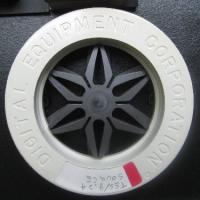Hi everyone, I have a new project idea. It would be a sort of a new design for the XTAG2 (Maybe call it the XTAG 3?). I was thinking of using an SU1 chip instead of an L1 for 2 reasons. 1. It would simplify the power delivery system reducing the total B.O.M price. 2. With the integrated USB PHY, there is no need for an external USB PHY further reducing the total B.O.M price.
My problem is that I'm more of a PCB design guy and less of a software guy. With the XTAG2 firmware designed for an L1 chip, I am sure that adapting it for the SU1 chip would not be so complicated. Well... Lets say it's kinda complicated for me. So, I am asking for help from someone who is able to adapt the firmware to make it work on the SU1...
Thanks for the help in advance :P ,
Alex
Project idea, need help...
-
narutoxela
- Active Member
- Posts: 46
- Joined: Wed Apr 20, 2011 9:30 pm
-
narutoxela
- Active Member
- Posts: 46
- Joined: Wed Apr 20, 2011 9:30 pm
Also, I was thinking that simplifying the design would maybe make it simple enough to integrate the desing on a custom board instead of using an external XTAG2 to program the chip. This would reduce the hastle of the consumer when buying a XMOS dev board for example, no need to buy an XTAG2 just to program the chip on the dev board.
-
Gravis

- Experienced Member
- Posts: 75
- Joined: Thu Feb 02, 2012 3:32 pm
in designing my own XMOS dev board, i ran into the same communications dilemma.
check out the XC-1A dev kit. it uses a FTDI chip to do the communications. however, the IC they use is rather expensive (something around $7) and requires FTDI drivers which is annoying. if you are making a handful of boards, go with this route.
i'm going with mass production so it's in my best interest to avoid FTDI. i chose to go with a non-application specific IC, an MCU. i'm using this MCU as it has everything needed (UART/USB/GPIOs), doesnt need an external oscillator even for USB communications and has an ultrasmall footprint (4mm x 4mm!) which was needed. i'm in the process of writing the code that would enable it to act as a better version of the expensive FTDI chip.
however, if you have the board space, are allergic to obscure systems, terrible dev software, the 8051 arch, QFN packaging or OTP memory then i would suggest using a ATMEGA8U2-AU.
what you want is to make two USB CDC ACMs (USB Virtual Serial Port). then you connect a MCU UART to any two 2-bit ports on your XMOS chip which you then specify in the .xn file for XDE. finally, you connect the debug lines to the MCU. you then can then emulate the I/O data format of the XTAG-2. it's completely open source, so it shouldnt be too hard. you can get started with USB CDC ACM with this simple code for one port: http://www.sparetimelabs.com/usbcdcacm/index.html
when it's ready, i'll release the source code and be selling preprogrammed configurable chips so people can just put them on a project of your own for a few bucks and still have a better chip than the ftdi chips. however, that is likely to be close to the end of the year, so dont wait on me.
check out the XC-1A dev kit. it uses a FTDI chip to do the communications. however, the IC they use is rather expensive (something around $7) and requires FTDI drivers which is annoying. if you are making a handful of boards, go with this route.
i'm going with mass production so it's in my best interest to avoid FTDI. i chose to go with a non-application specific IC, an MCU. i'm using this MCU as it has everything needed (UART/USB/GPIOs), doesnt need an external oscillator even for USB communications and has an ultrasmall footprint (4mm x 4mm!) which was needed. i'm in the process of writing the code that would enable it to act as a better version of the expensive FTDI chip.
however, if you have the board space, are allergic to obscure systems, terrible dev software, the 8051 arch, QFN packaging or OTP memory then i would suggest using a ATMEGA8U2-AU.
what you want is to make two USB CDC ACMs (USB Virtual Serial Port). then you connect a MCU UART to any two 2-bit ports on your XMOS chip which you then specify in the .xn file for XDE. finally, you connect the debug lines to the MCU. you then can then emulate the I/O data format of the XTAG-2. it's completely open source, so it shouldnt be too hard. you can get started with USB CDC ACM with this simple code for one port: http://www.sparetimelabs.com/usbcdcacm/index.html
when it's ready, i'll release the source code and be selling preprogrammed configurable chips so people can just put them on a project of your own for a few bucks and still have a better chip than the ftdi chips. however, that is likely to be close to the end of the year, so dont wait on me.
-
rp181

- Respected Member
- Posts: 395
- Joined: Tue May 18, 2010 12:25 am
I'm not sure how much better you could make the XTAG2, especially for under 20$.
As for the UART -> USB converter, I've used both the FTDI chip and a SiLabs one. IMO, you should use the FTDI, it "just works" a lot easier. I've had issues getting the driver to work with the SiLabs chip on different computers, whereas almost every computer already has ftdi drivers included (so it's plug and play 99% of the time).
As for the UART -> USB converter, I've used both the FTDI chip and a SiLabs one. IMO, you should use the FTDI, it "just works" a lot easier. I've had issues getting the driver to work with the SiLabs chip on different computers, whereas almost every computer already has ftdi drivers included (so it's plug and play 99% of the time).
-
Gravis

- Experienced Member
- Posts: 75
- Joined: Thu Feb 02, 2012 3:32 pm
i'm better because it's much smaller and can be integrated into your projects. the FIFO and UART lines can be reconfigured to match a position that better suits your circuit layout. there is no need for a large connector that uses lots of pcb space. also, it costs only two bucks to get one MCU to do all the work. how is that not better?rp181 wrote:I'm not sure how much better you could make the XTAG2, especially for under 20$.
i'll be using USB CDC ACM which is a standard that needs no additional drivers. therefore, regardless of platform, it will work out of the box. FTDI is not one every PC, i find it unlikely that it's on even 10% of PCs. in addition, it has sub-par support on non-windows. how is ftdi better?As for the UART -> USB converter, I've used both the FTDI chip and a SiLabs one. IMO, you should use the FTDI, it "just works" a lot easier. I've had issues getting the driver to work with the SiLabs chip on different computers, whereas almost every computer already has ftdi drivers included (so it's plug and play 99% of the time).
-
JohnWilson

- Active Member
- Posts: 38
- Joined: Fri Oct 28, 2011 10:53 pm
Showing my dumbness: would the Microchip MCP2200 be of any use? USB CDC ACM, $2.12-$2.30 at qty=1, but I suppose the GPIO pins aren't likely to Just Work with XDE, unless configuring it for alien hardware is easier than I think...
John Wilson
D Bit
John Wilson
D Bit
-
rp181

- Respected Member
- Posts: 395
- Joined: Tue May 18, 2010 12:25 am
First off, I want to make it clear that this is just my opinion.
Trying to out-do the XTAG2 would take more than reducing your BOM cost. Economy of scale, especially in PCBs, is going to have much more of an impact than a few parts difference.
How are you going to make it work with the XDE? Or is this just for a UART -> VCOM converter? A $5 difference, IMO, doesn't warrant the sacrificing of the pervasiveness and support of FTDI.
If you can make it reliable (or even just do it for fun), by all means, go ahead.
Trying to out-do the XTAG2 would take more than reducing your BOM cost. Economy of scale, especially in PCBs, is going to have much more of an impact than a few parts difference.
The point of development boards (what the XTAG is for) is to get things working, size is not a issue. Having it separate reduces complexity drastically, and lets you focus on your project alone. If, however, you want a project that isn't for pure development purposes, there are solutions that aren't as big/complex as the XTAG (as the XC-1A uses). Or, you could do what I do for my more professionalism projects - not include anything but small pads. These serve as temporary wire connections to connect to the XTAG for programming, and take next to no extra space.i'm better because it's much smaller and can be integrated into your projects
i'll be using USB CDC ACM which is a standard that needs no additional drivers...how is ftdi better
How are you going to make it work with the XDE? Or is this just for a UART -> VCOM converter? A $5 difference, IMO, doesn't warrant the sacrificing of the pervasiveness and support of FTDI.
If you can make it reliable (or even just do it for fun), by all means, go ahead.
